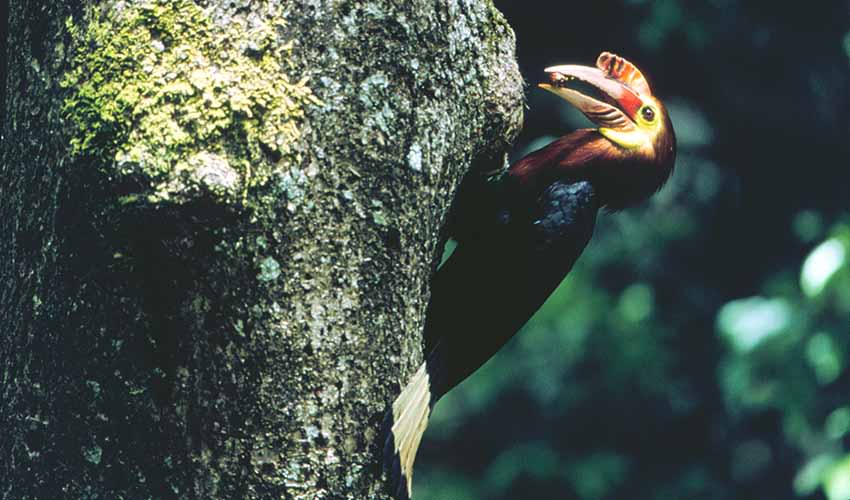Also known as the Visayan wrinkled hornbill, it is one of the rarest and most endangered hornbills in the world. Endemic to the Visayan Islands in the central Philippines, specifically the islands of Negros and Panay, this hornbill is not only biologically unique — it’s also a powerful symbol of forest conservation in the region. With its large size, vivid coloring, and unusual nesting behavior, Walden’s hornbill is a true rainforest icon that many people have never even heard of.
One of the most distinctive features of Walden’s hornbill is its striking bill and casque — the helmet-like ridge on top of its upper beak. In males, the bill is yellowish-orange with a bright red casque, while females have a black bill and casque, making the two sexes easily distinguishable, a rare trait among birds. Both sexes have pale blue facial skin, white throats, and glossy black bodies, with chestnut-colored tails that add to their dramatic appearance. Their large, curved bills might look heavy, but they are surprisingly light, made of hollow, honeycomb-like bone. The casque is believed to help amplify their calls and may also play a role in mate selection.
What really sets Walden’s hornbill apart, though, is its nesting behavior. Like other hornbills, the female enters a tree cavity and seals herself inside with a wall of mud and food pulp, leaving just a narrow slit. She stays inside for weeks, laying her eggs and raising the chicks, entirely dependent on the male to deliver food through the slit. This incredible system provides excellent protection from predators, but it also makes the birds extremely vulnerable to habitat loss — they need large, mature trees with suitable cavities to breed, and such trees are disappearing rapidly in the Visayan region.
Distribution
 Philippines
Philippines Official estimate
Official estimate
Anything we've missed?
Help us improve this page by suggesting edits. Glory never dies!
Suggest an editGet to know me
Terrestrial / Aquatic
Altricial / Precocial
Polygamous / Monogamous
Dimorphic (size) / Monomorphic
Active: Diurnal / Nocturnal
Social behavior: Solitary / Pack / Flock
Diet: Carnivore / Frugivore / Omnivore / Piscivorous / Insectivore
Migratory: Yes / No
Domesticated: Yes / No
Dangerous: Yes / No




